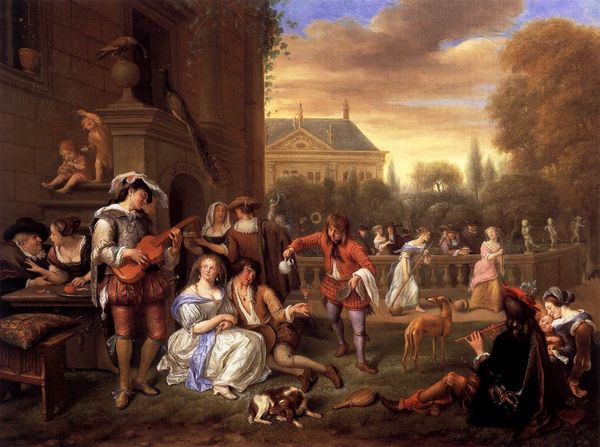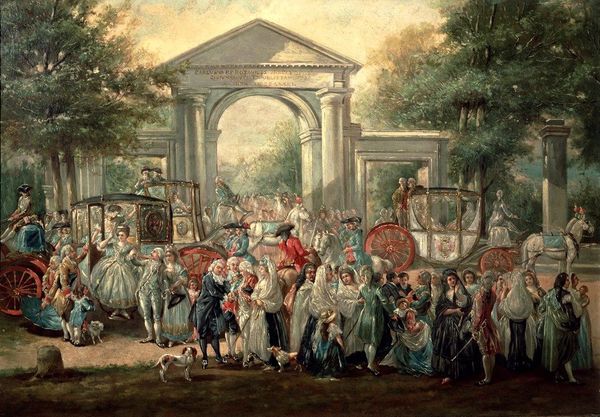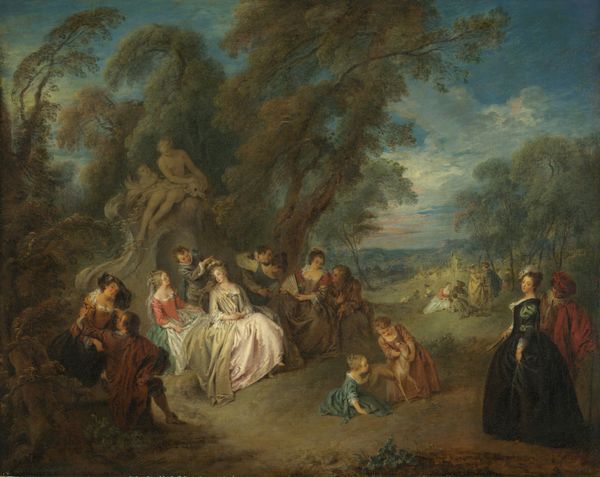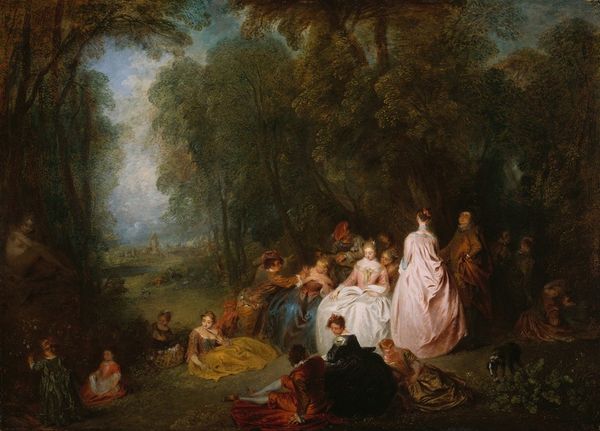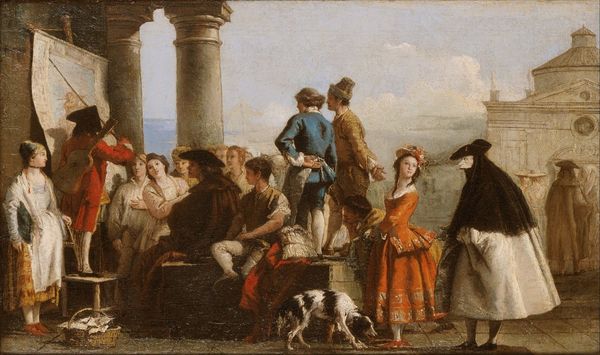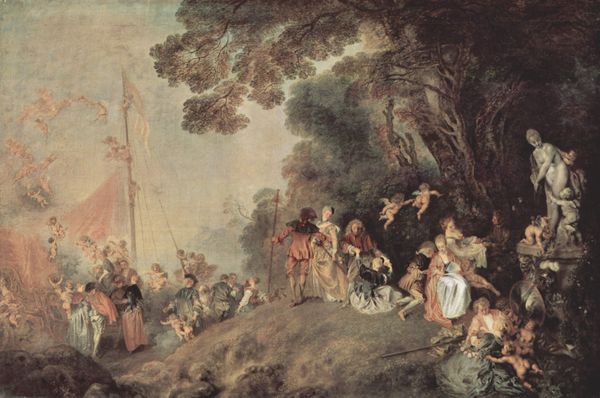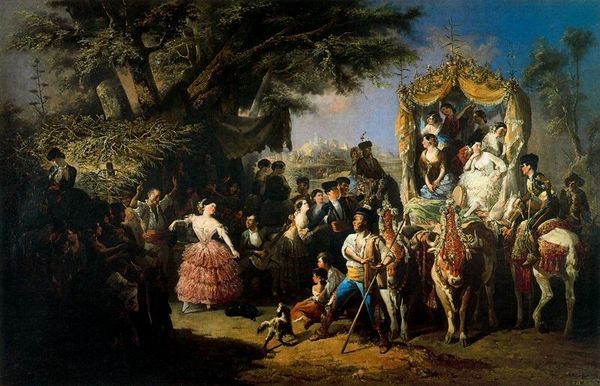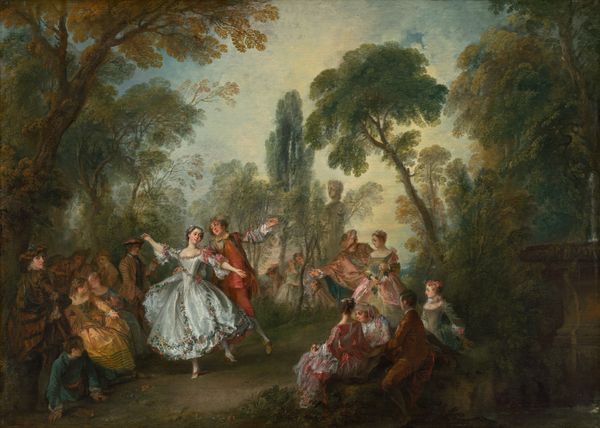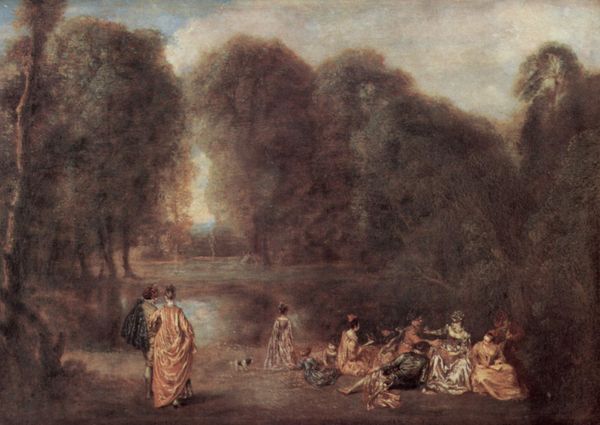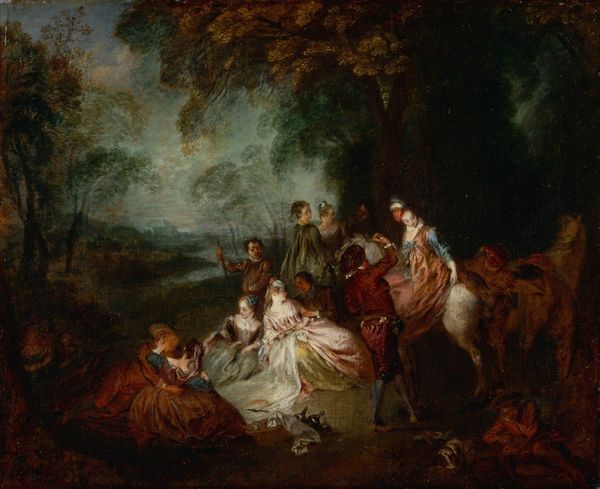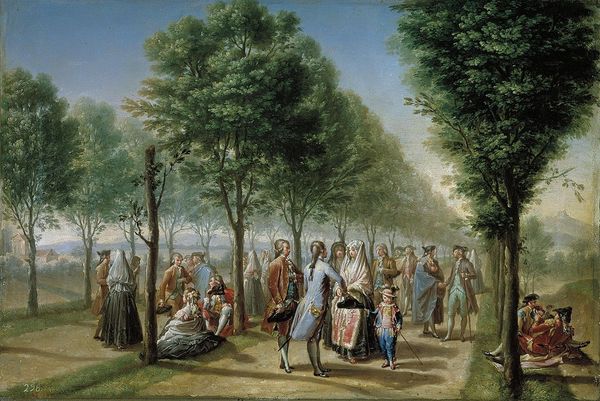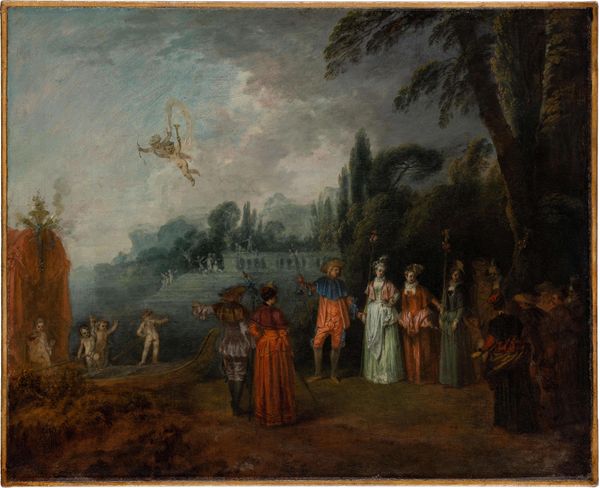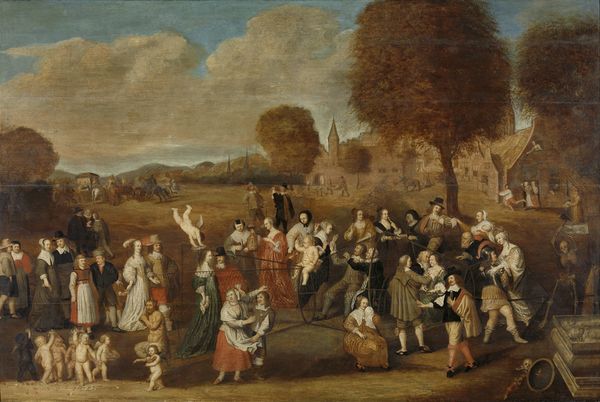
painting, oil-paint
#
gouache
#
figurative
#
baroque
#
painting
#
oil-paint
#
landscape
#
figuration
#
oil painting
#
genre-painting
#
rococo
Copyright: Public Domain: Artvee
Curator: What strikes me immediately about "Les Plaisirs du Bal" is its overwhelming sense of wistful merriment. It feels both fleeting and performative. Editor: This painting, often attributed to Jean-Antoine Watteau, encapsulates much about French Rococo society and their penchant for fêtes galantes – elaborate outdoor entertainments among the elite. Note the careful choreography between artifice and nature; even joy becomes a spectacle here. Curator: Yes, the architecture framing the scene is fascinating. The figures seem to occupy an ambiguous space between interior and exterior, further emphasized by the formality of their dress set against the almost wild, unruly suggestion of landscape. I would suggest there's a thematic interplay that emphasizes the controlled abandon, especially notable in the arrangement of its participants within this proscenium space. Editor: Look at how the artist used light. Soft and diffuse, it contributes to the dreamlike atmosphere, a stylistic feature particularly popular during this period. Furthermore, see how the figures aren't quite distinct—this further amplifies the emphasis of capturing a scene's visual impressions. Curator: Indeed. I believe the scene captures an important development where leisure becomes a commodity and a marker of social standing. Such images bolstered aristocratic ideals during an age when their cultural dominance faced challenge from increasingly wealthy merchant classes. It acts as a window into how elites wish to perceive themselves: graceful, unburdened, yet powerful. Editor: One final observation: the use of color here is particularly effective. Notice the muted tones offset by flashes of vibrant colors that create an almost jewel-like effect that enlivens the senses—all the while maintaining order among many scattered individuals. Curator: I find it offers us an opportunity to look back at a complex dance of representation where life imitates art—or perhaps the other way around. It reminds one of the ephemeral nature of enjoyment and how such images are shaped not only through painterly skill but historical context. Editor: Yes, examining this from a Formalist view helps appreciate that even frivolity can reveal underlying complexity, which is subtly enhanced by the artwork's own aesthetic properties.
Comments
No comments
Be the first to comment and join the conversation on the ultimate creative platform.
